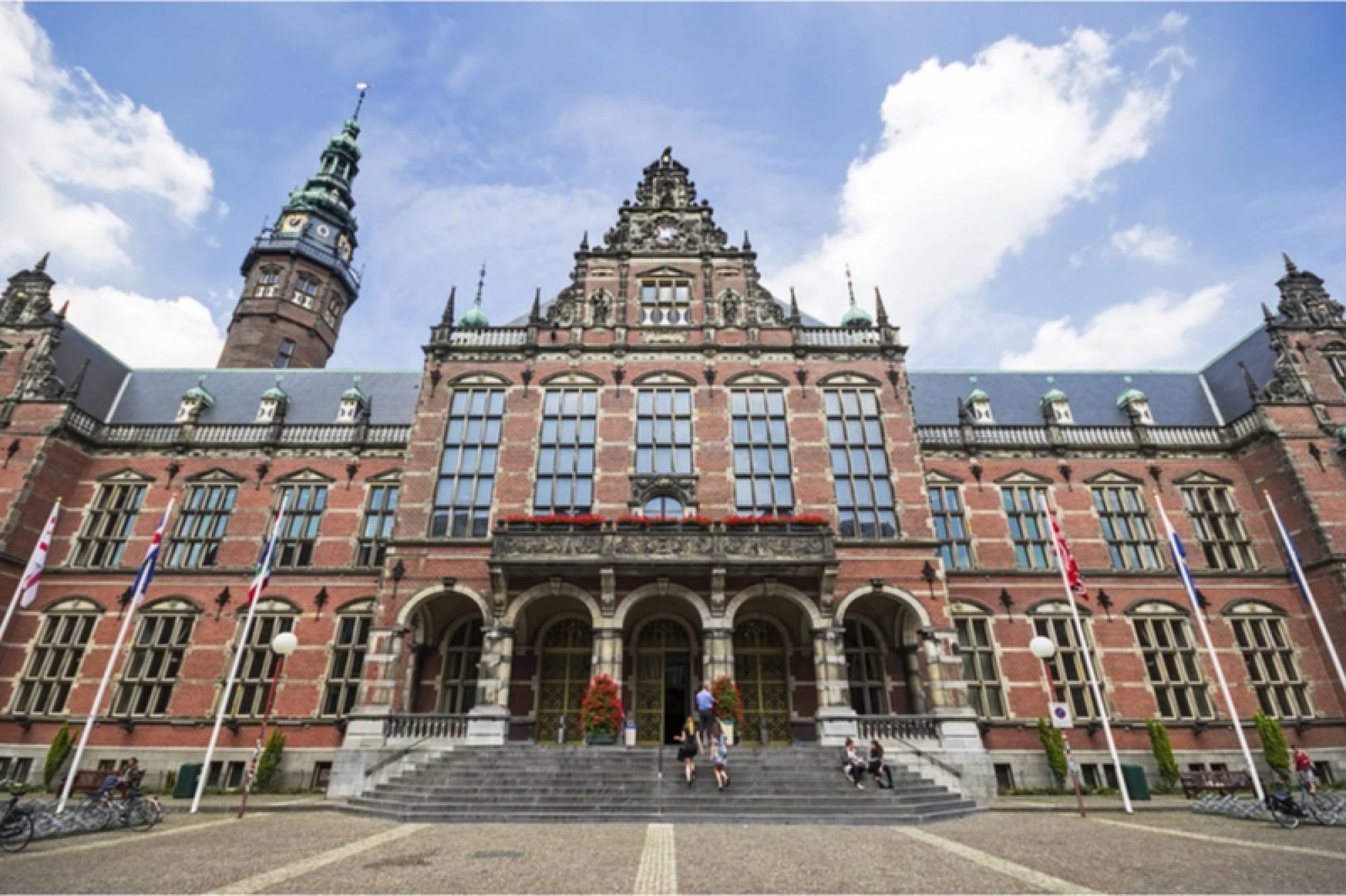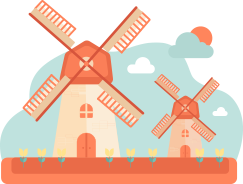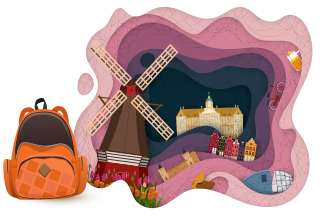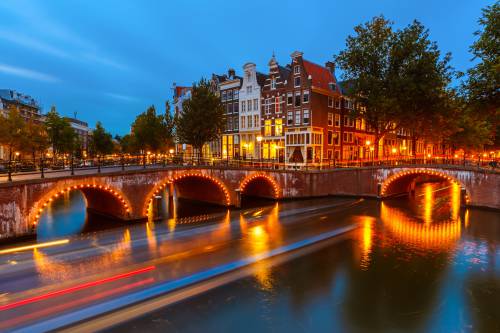
Student City Groningen
Most RUG faculties are in Groningen, and with all of its main buildings located in the historical city center, the university truly lies at the heart of the city. Moreover, students in Groningen make up very face of the city. With over 25% of its population of 225.000 comprised of students, Groningen is the youngest city in the Netherlands.
As a result, Groningen is always vibrant with festivals, art, and startup and creative initiatives. Moreover, nightlife continues into the early mornings with some bars even being open 24 hours a day! The Erasmus Student Network (ESN) organizes more than 150 activities in and around the city every year. These activities start with a lively introduction week but also include eating traditional Dutch food at locals living in the province and biking lessons to help internationals getting around in this bustling, yet a compact city.
Because of its dynamic nature, multiple streets in Groningen have won awards for the best and most fun shopping streets in the country. Also, the beautiful and iconic Stadsschouwburg (city theatre) is at 133 years of age one of the oldest theatres in the Netherlands. Yet, regardless of its popularity, Groningen is a much more affordable student city than any of the ones found in the Randstad.
History of Groningen and the University of Groningen
Groningen’s history goes back to at least 300 BC, but it was not until it became a “Hanzestad” in the 13th century that it truly started to flourish. Until the 17th century, Groningen was part of the Hanseatic League, which was a thriving trading alliance that stretched from England and France all the way to Scandinavia and Russia.
Shortly after Groningen left the Hanseatic League, the UG was founded in 1614. Although Groningen wasn’t part of the international trading alliance anymore, the city still had a very international character. As a result, also the university has been very internationally focused from the start, with roughly half of its students and lecturers coming from abroad ever since the end of the 17th Century.
During its 4-century lifetime, the UG has taught many notable people, including:
- Frits Zernike: winner of the Nobel Prize for physics in 1953.
- Ben Feringa: winner of the Nobel Prize for Chemistry in 2016.
- Aletta-Henriëtte Jacobs: the first Dutch female who studied and got a university degree.
- Wubbo Johannes Ockels: the first Dutch astronaut.
- Marie Elise Loke: the first female lecturer of the Netherlands.
- Wim Duisenberg: the first Dutch President of the European Central Bank.
Study Figures of the University of Groningen
There are almost 50 Bachelor’s degrees and more than 160 Master’s degrees that you can study at the UG. Of these, over 160 are English-taught degrees, which makes the UG one of the most foreigner-friendly universities of the country. It is not surprising, therefore, that its student body of over 36.000 students come from more than 120 different countries!
Every year, the UG is firmly positioned in the global top 100, and year after year 10 of the 69 best ranking Bachelor’s degrees of the Netherlands are taught at the UG. Current innovative research is “focused on Energy, Healthy Ageing and a Sustainable Society,” of which “recent topics have included finding ‘greener’ plastics, ways to exercise more consciously, and the effects of climate change on birds.”
University of Groningen faculties
The UG has 11 faculties: 10 spread over 150 buildings throughout Groningen and 1 faculty in 1 building located in Leeuwarden. In addition, for the students excelling at their studies, there’s an Honours College to deepen their knowledge and further develop themselves on both personal and professional level. Finally, the UG collaborates with the Hanze University to host the Studium Generale, an initiative consisting of public lectures, debates, and related events that are also open for people who are not studying.
When it comes to the UG, the city of Groningen is indeed much of its campus. The cool thing is that the university buildings don’t necessarily look like educational facilities from the outside; many of them are among the most beautiful historic buildings that make up the city.
The University Library, on the other hand, is recently renovated and has become one of the most modern buildings in town. Also, the Zernike campus is very modern and continues to expand in order to accommodate the ever-growing number of students coming to Groningen. For this reason, also new accommodations are constantly built throughout the city, and the infrastructure is modernized in order to handle the constantly increasing population.
International students in the Netherlands
So, if you’re an international student looking to study in the Netherlands, make sure to have a look at the vast number of English-taught study programs of the UG! Throughout the city, you’ll be surrounded by peers, and you won’t have to spend unreasonable amounts on your cost of living. As such, studying at the UG indeed offers the best of both worlds when it comes to your student life.


























